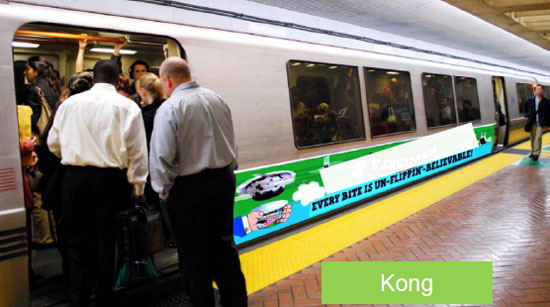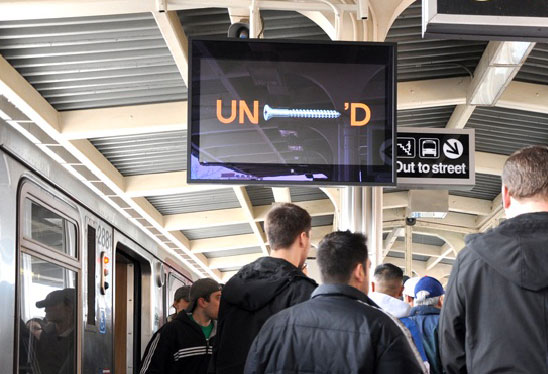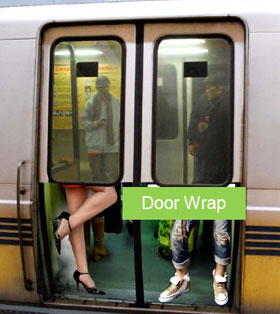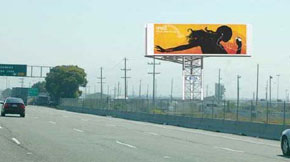
Unlike every other transit agency in the Bay Area, BART was able to stanch the economic bleeding over the past year and realize a modest operational surplus at the end of FY 2010 in June. The agency doesn't have a warm and fuzzy feeling, however, and Board President James Fang has asked staff to present additional revenue generating measures at tomorrow's board meeting.
Though Fang said BART's fiscal stewardship over the past two years set an "example of how to run a transit system in a recession," the agency had to anticipate the next economic turmoil with greater diversity of revenue sources. "We can't rest on our laurels. Any way you can get more revenue into the system, that means you don't have to lay off people," he said.
Over the past month, BART staff looked into numerous best practices from transit operators around the world and narrowed the more realistic options to five [pdf]. Two of them would involve setting up video monitors in stations and train cars, though both have differing benefits and challenges. According to BART spokesperson Linton Johnson, Titan's current contract for advertising in stations gives them the right to bid first on station monitors, which they are expected to exercise with a proposal.
Johnson was clear to highlight the monitors in station and cars, if they were voted on by the board, would be video only and primarily provide BART arrival and delay information, as well as some news, weather and advertising.The staff report notes the station monitor option has generated little interest beyond the Titan proposal, so should it not meet BART's revenue needs, the option might not proceed due to lack of interest. Until the proposal from Titan comes through, BART had no estimate on how much revenue the station monitors could generate.

The challenge of installing monitors on train cars is two-fold, according to Johnson. First, the rail cars were not designed to accommodate monitors or the real-time networks that would be needed to provide relevant information. BART would have to consider how much it wants to spend outfitting the older cars with the monitors versus the revenue it would produce. Second, because the agency is in the beginning phase of car replacement, Johnson said it might be more cost-effective simply to design the monitors into the new cars. Regardless, he said, the agency wanted to get as much information to riders as possible in the near-term, given rider feedback on the issue.
"Riders have been crying out for information on the train that gives them the ability to know when they'll arrive at the next station," said Johnson, who joked that BART customers would appreciate having real-time traffic information on the trains so "you can laugh at people on the road as you're passing them by."

The third option would involve partial or complete train advertising wraps. BART has experimented with wraps in the past, but Johnson said they were for Spare the Air Day and other non-revenue generating campaigns. Whether or not customers would stomach wraps for commercial advertisers and whether they would be on the entire fleet of cars or only portions of them are questions that will be discussed at the meeting.
The two options BART expects to generate the most controversy are billboards along BART right-of-way and station co-naming rights. BART's tracks are proximate to freeways throughout the system, primarily in the East Bay and to the east of the Oakland and Berkeley hills, where the agency theoretically could install billboards. While there are several layers of regulatory hurdles to surmount, BART has already received an unsolicited proposal for electronic billboards. The proposal would be for 12 two-sided digital signs, with the contractor keeping 20 percent of ad revenues and BART earning $3.6 million annual revenue and an up-front payment of $15.6 million.
Station co-naming rights not only contradict the current BART policy on station naming, but would likely lead to various concerns, including public backlash and the ever changing corporate names (think Candlestick Park). Johnson said the current policy is to name stations with geographical indicators to help with wayfinding, particularly for tourists and visitors to the Bay Area. When asked how well he thought the "Al Davis Oakland Coliseum Station" would go over with BART riders, Johnson laughed but declined comment.

Considering the potential concerns BART riders might have with the various proposals, Fang said he wanted to strike a balance between having revenue to continue improving BART service and maintenance versus invasive advertising and controversy.
"Some people may have questions on the aesthetics and I'm very sensitive about that," he said. "I asked staff for ideas, the first crack at those ideas are in the presentation."





